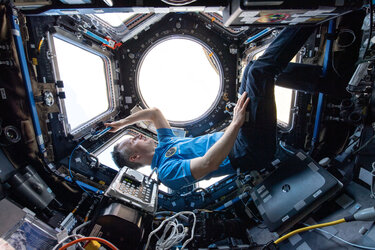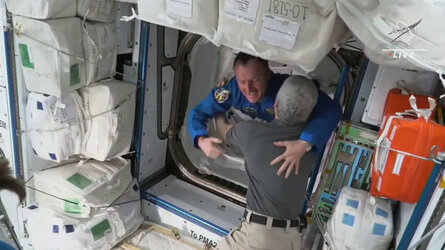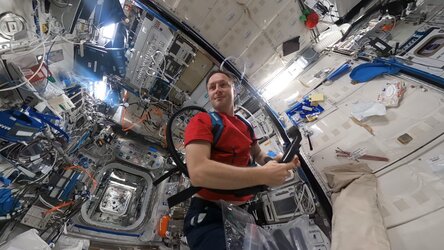Accept all cookies Accept only essential cookies See our Cookie Notice

About ESA
The European Space Agency (ESA) is Europe’s gateway to space. Its mission is to shape the development of Europe’s space capability and ensure that investment in space continues to deliver benefits to the citizens of Europe and the world.
Highlights
ESA - United space in Europe
This is ESA ESA facts Member States & Cooperating States Funding Director General Top management For Member State Delegations European vision European Space Policy ESA & EU Responsibility & Sustainability Annual Report Calendar of meetings Corporate newsEstablishments & sites
ESA Headquarters ESA ESTEC ESA ESOC ESA ESRIN ESA EAC ESA ESAC Europe's Spaceport ESA ESEC ESA ECSAT Brussels Office Washington OfficeWorking with ESA
Business with ESA ESA Commercialisation Gateway Law at ESA Careers Cyber resilience at ESA IT at ESA Newsroom Partnerships Merchandising Licence Education Open Space Innovation Platform Integrity and Reporting Administrative Tribunal Health and SafetyMore about ESA
History ESA Historical Archives Exhibitions Publications Art & Culture ESA Merchandise Kids Diversity ESA Brand Centre ESA ChampionsLatest
Space in Member States
Find out more about space activities in our 23 Member States, and understand how ESA works together with their national agencies, institutions and organisations.
Science & Exploration
Exploring our Solar System and unlocking the secrets of the Universe
Go to topicAstronauts
Missions
Juice Euclid Webb Solar Orbiter BepiColombo Gaia ExoMars Cheops Exoplanet missions More missionsActivities
International Space Station Orion service module Gateway Concordia Caves & Pangaea BenefitsLatest
Space Safety
Protecting life and infrastructure on Earth and in orbit
Go to topicAsteroids
Asteroids and Planetary Defence Asteroid danger explained Flyeye telescope: asteroid detection Hera mission: asteroid deflection Near-Earth Object Coordination CentreSpace junk
About space debris Space debris by the numbers Space Environment Report In space refuelling, refurbishing and removingSafety from space
Clean Space ecodesign Zero Debris Technologies Space for Earth Supporting Sustainable DevelopmentLatest
Applications
Using space to benefit citizens and meet future challenges on Earth
Go to topicObserving the Earth
Observing the Earth Future EO Copernicus Meteorology Space for our climate Satellite missionsCommercialisation
ESA Commercialisation Gateway Open Space Innovation Platform Business Incubation ESA Space SolutionsLatest
Enabling & Support
Making space accessible and developing the technologies for the future
Go to topicBuilding missions
Space Engineering and Technology Test centre Laboratories Concurrent Design Facility Preparing for the future Shaping the Future Discovery and Preparation Advanced Concepts TeamSpace transportation
Space Transportation Ariane Vega Space Rider Future space transportation Boost! Europe's Spaceport Launches from Europe's Spaceport from 2012Latest
100 days of Cosmic Kiss
Thank you for liking
You have already liked this page, you can only like it once!
English - 100 days of Cosmic Kis
On 11 November 2021, ESA astronaut Matthias Maurer was launched to the International Space Station for his first mission, Cosmic Kiss. Around 100 days later, we reflect on some highlights from space.
Matthias flew to the Station on a SpaceX Crew Dragon alongside NASA astronauts and fellow first-time fliers Kayla Barron and Raja Chari, and NASA spaceflight veteran Tom Marshburn. Collectively known as Crew-3, they were welcomed as members of Expedition 66 by Commander Anton Shkaplerov, cosmonaut Pyotr Dubrov and NASA’s Mark Vande Hei.
While in orbit, Matthias is supporting over 35 European and many more international experiments. The outcomes of these experiments will advance our knowledge in areas ranging from human health to materials science, physics, Earth observation, technology development and more.
Matthias is expected to spend approximately six months in orbit and there are many more highlights to come. Find out more about the science he’s supported to date in this 100 days of Cosmic Kiss science round-up.
This article is also available in German language.
Access the related broadcast quality video material.
German - 100 Tage Cosmic Kiss
Am 11. November 2021 startete der ESA-Astronaut Matthias Maurer zu seiner ersten Mission "Cosmic Kiss" zur Internationalen Raumstation ISS. Rund 100 Tage später blicken wir auf einige Höhepunkte aus dem Weltall zurück.
Matthias flog an Bord eines SpaceX Crew Dragon zusammen mit den NASA-Astronauten und Erstfliegern Kayla Barron und Raja Chari sowie dem NASA-Raumfahrtveteranen Tom Marshburn zur ISS. Gemeinsam als Crew-3 bekannt, wurden sie von Kommandant Anton Shkaplerov, Kosmonaut Pyotr Dubrov und NASA-Astronaut Mark Vande Hei als Mitglieder der Expedition 66 begrüßt.
Im Orbit unterstützt Matthias über 35 europäische und viele weitere internationale Experimente. Die Ergebnisse dieser Experimente werden unser Wissen in den Bereichen Humanmedizin, Materialwissenschaft, Physik, Erdbeobachtung, Technologieentwicklung und mehr vorantreiben.
Matthias wird voraussichtlich etwa sechs Monate in der Umlaufbahn verbringen, und es werden noch viele weitere Höhepunkte folgen. Bleibt dran und erfahrt mehr über seine Mission auf der Cosmic Kiss Missions-Webseite der ESA.
-
CREDIT
ESA - European Space Agency -
LICENCE
ESA Standard Licence
-
Documentary
-
-
-
-
-

Russian Node Module arrives

Matthias in the Cupola

Hello and goodbye in 360° | Cosmic Kiss

Crew-3 docking replay















 Germany
Germany
 Austria
Austria
 Belgium
Belgium
 Denmark
Denmark
 Spain
Spain
 Estonia
Estonia
 Finland
Finland
 France
France
 Greece
Greece
 Hungary
Hungary
 Ireland
Ireland
 Italy
Italy
 Luxembourg
Luxembourg
 Norway
Norway
 The Netherlands
The Netherlands
 Poland
Poland
 Portugal
Portugal
 Czechia
Czechia
 Romania
Romania
 United Kingdom
United Kingdom
 Slovenia
Slovenia
 Sweden
Sweden
 Switzerland
Switzerland


























